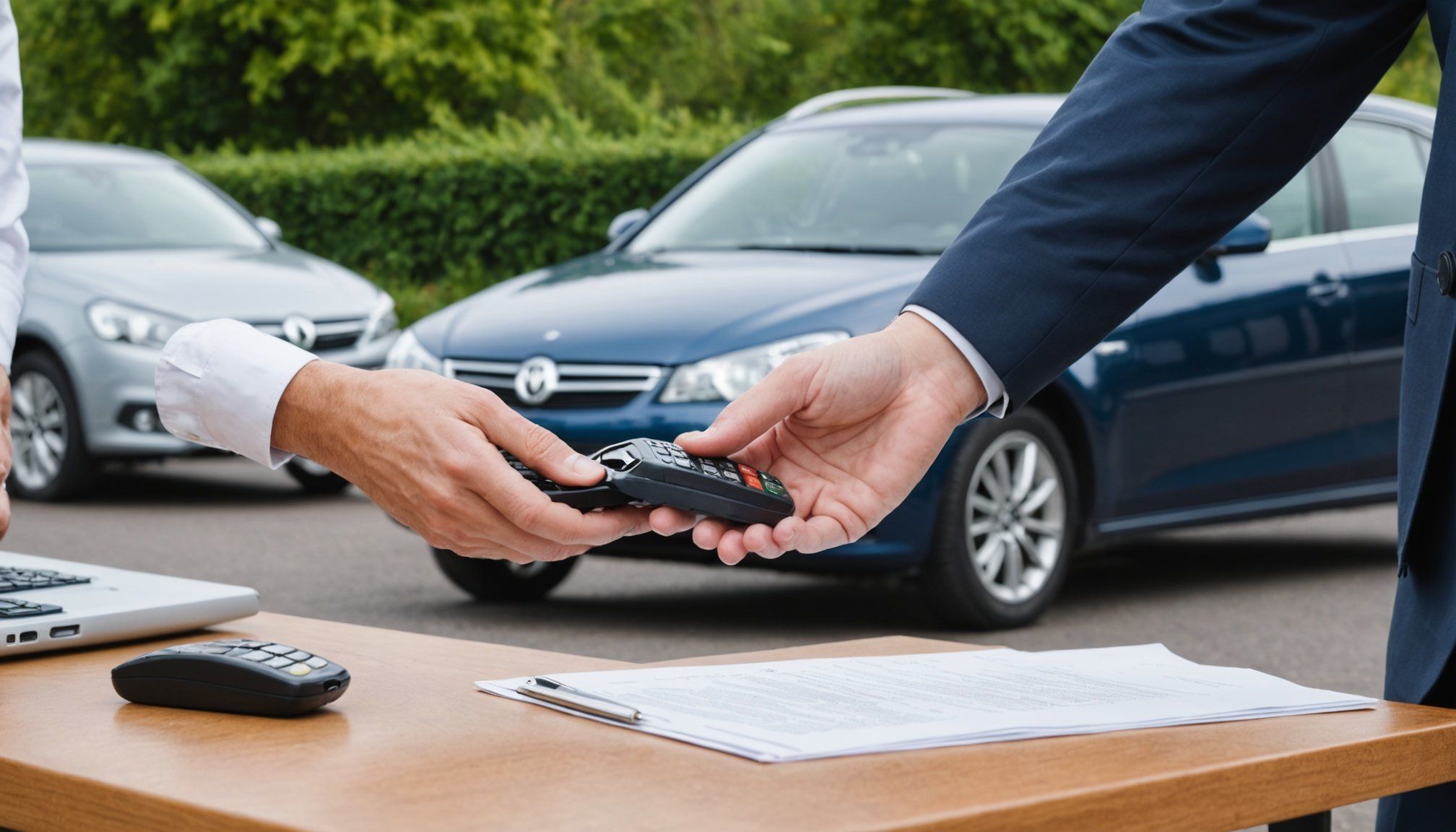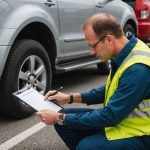Purchasing a vehicle is a significant investment, and ensuring that this process is free from fraud is crucial. With a rising number of scams targeting unsuspecting buyers, it’s essential for you to be well-informed about the potential pitfalls. In this article, we will explore the necessary steps you should take to safeguard your money and details while navigating the vehicle buying process in the UK. From verifying the vehicle’s history to understanding payment methods, each section will guide you on how to protect yourself from fraud during your vehicle purchase.
Understanding Vehicle Fraud: What You Should Know
Fraud in vehicle purchases can take many forms, including scams involving fake listings, cloned vehicles, and dishonest sellers. The first step in ensuring a fraud-free vehicle purchase is to understand the different types of fraud that can occur. A common tactic used by scammers involves creating fake ads on online platforms, where they present vehicles at prices that seem too good to be true. These ads often contain details that might lure you in, but they are, in fact, designed to deceive.
Also read : How can fleet management companies in the UK reduce their carbon footprint?
Another prevalent issue is the sale of cloned vehicles. In this scenario, a stolen vehicle is given false documents that match the identity of a legitimate car. This makes it difficult for you to identify the true nature of the vehicle. To ensure you are not falling victim to such scams, always conduct thorough checks on the vehicle’s history using services like HPI checks. These services provide crucial information about the vehicle’s background, including any outstanding finance, previous accidents, or if it has been reported as stolen.
Moreover, when dealing with online listings, be cautious about the communication methods employed by sellers. Scammers often prefer email or messaging platforms that allow them to maintain anonymity. If a seller insists on communicating only through these channels and avoids phone calls or face-to-face meetings, it might be a red flag. Always verify the seller’s identity and ensure they are legitimate before proceeding with any transactions. Understanding these aspects will arm you with knowledge, reducing the likelihood of falling victim to fraud.
Also read : What are the potential risks of buying a vehicle with a history of accidents in the UK?
Checking the Vehicle’s History: Essential Steps
Once you have a potential vehicle in mind, the next step is to check its history to avoid scams. A vehicle history report can provide you with vital information that can influence your buying decision. Services such as the DVLA and HPI check can provide comprehensive details.
Start by obtaining the Vehicle Identification Number (VIN) from the seller. This number is unique to each vehicle and allows you to access its history. Look for any signs of altering or tampering with the VIN, as this can indicate possible fraud. Once you have the VIN, use it to run a report that highlights any previous accidents, insurance claims, or whether the vehicle has been written off. Such details are crucial as they give insight into the vehicle’s condition and reliability.
Additionally, you should verify the MOT history of the vehicle. The MOT test ensures that vehicles meet safety and environmental standards. You can easily check a vehicle’s MOT status online through the DVLA website. If the vehicle has regularly passed its MOT, this can be a good sign of its condition. Conversely, a history of failed inspections might warrant further scrutiny.
Lastly, contact the bank or the insurance company associated with the vehicle. If you notice discrepancies in the vehicle’s history, or if the seller is unable or unwilling to provide key documents such as the V5C registration certificate, this could indicate a scam. Always trust your instincts and be prepared to walk away from a deal if something does not feel right.
Payment Methods: Protecting Your Money
When it comes to making a payment for your vehicle, the method you choose can significantly impact your safety against fraud. Avoid cash transactions whenever possible, as they leave little room for recourse if a scam occurs. Instead, opt for secure payment methods that provide a level of protection. Bank transfers are generally safer than cash, but they too come with risks if the seller is fraudulent.
Consider using escrow services or payment plans offered by established dealers. These options ensure that your money is not transferred to the seller until you have received the vehicle and completed the necessary checks. This process helps protect you from potential fraud by retaining the funds until both parties fulfill their obligations.
If you decide to pay in cash, ensure that you do so in a secure location where both parties feel safe. Meet in public places and during daylight hours to minimize risks. Always request a receipt for any transaction you make, as this serves as proof of payment and may be useful should a dispute arise later.
Additionally, be wary of sellers who push for quick payments or try to rush the transaction process. Scammers often use high-pressure tactics to prevent buyers from conducting proper checks. Take your time, conduct thorough research, and ensure every aspect of the transaction is secure.
Communicating with the Seller: Key Tips
Effective communication with the seller is crucial in the vehicle buying process. You must establish a clear line of communication to ensure that you are receiving accurate information regarding the vehicle. Always prefer direct communication methods such as phone calls or face-to-face meetings rather than relying solely on email or text messages.
When you contact the seller, ask specific questions about the vehicle’s history, condition, and any repairs it has undergone. A legitimate seller will be open and forthcoming with details, while a fraudulent seller may provide vague answers or avoid your inquiries altogether. Take note of their response times and communication style; scammers often respond quickly and with generic answers.
Moreover, consider arranging a meeting to view the vehicle in person. Inspecting the car allows you to evaluate its condition and ask further questions. Bring someone knowledgeable about cars if you feel unsure about the technical aspects. They can help you identify potential issues that you might overlook.
Finally, if at any point you feel uncertain about the legitimacy of the seller, trust your instincts. It’s better to walk away from a deal than to risk your hard-earned money.
Final Steps: Inspections and Documentation
After you have completed your research and communication with the seller, it’s time to finalize the purchase. However, before making any transactions, it’s wise to conduct a thorough inspection of the vehicle. You may want to hire a professional mechanic to assess the car’s condition. A mechanic can identify issues that may not be visible to the untrained eye, providing you with peace of mind about your investment.
In addition to the inspection, ensure that all necessary documentation is in order. The seller should provide a valid V5C registration document, which proves their ownership of the vehicle. Cross-reference this document with the details provided in your history check to ensure consistency. Additionally, ensure that the seller has settled any outstanding finance on the vehicle. If there is outstanding finance, the vehicle may be repossessed by the bank, leaving you without your purchase.
Don’t forget to check insurance requirements. Before driving away, ensure that you have the necessary insurance in place. Driving without insurance can lead to significant penalties. It’s advisable to arrange your insurance in advance to avoid any last-minute complications.
Finally, once everything checks out, and you feel confident in your purchase, make sure to record everything. Keep copies of all documents, including the bill of sale, the vehicle’s history report, and any correspondence with the seller. This documentation will be invaluable should you encounter any issues in the future.
In conclusion, taking the right steps to ensure a fraud-free vehicle purchase in the UK involves thorough research, effective communication, and secure payment methods. By understanding the types of fraud that can occur, checking the vehicle’s history, and being vigilant during the transaction process, you can significantly reduce the risk of falling victim to scams. Always be proactive in verifying the seller’s legitimacy, and don’t hesitate to walk away from a deal that doesn’t feel right. Your money and safety are paramount, and with the right precautions, you can confidently navigate the vehicle buying process.











